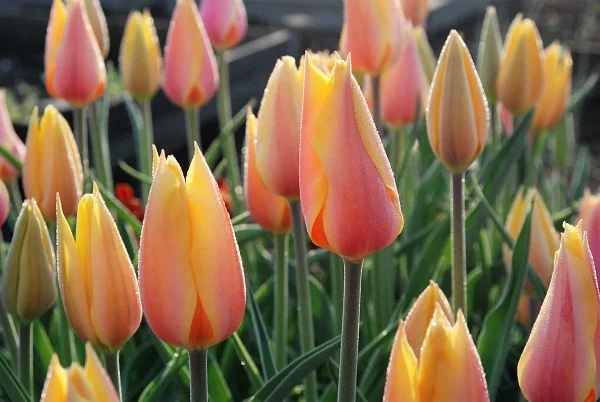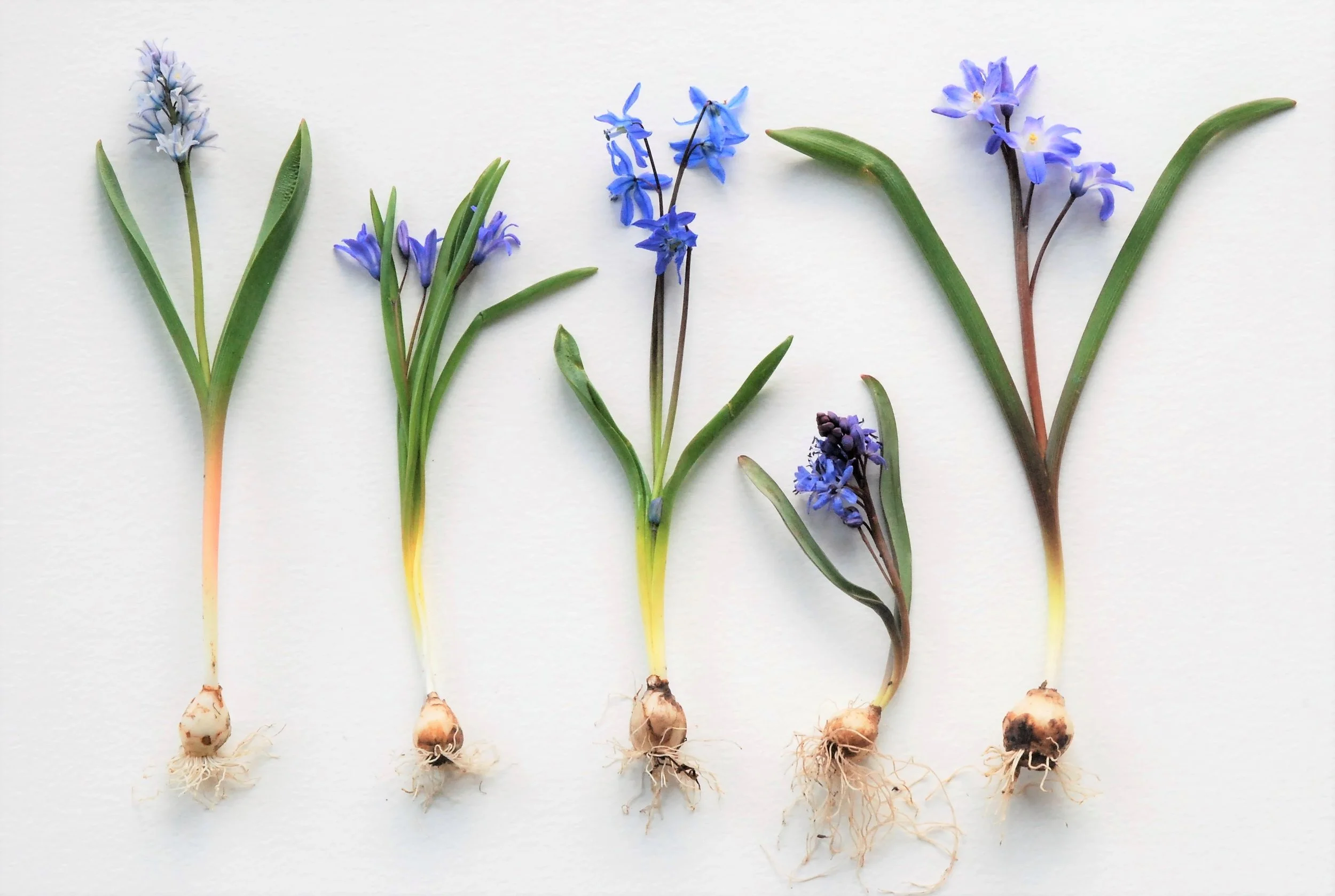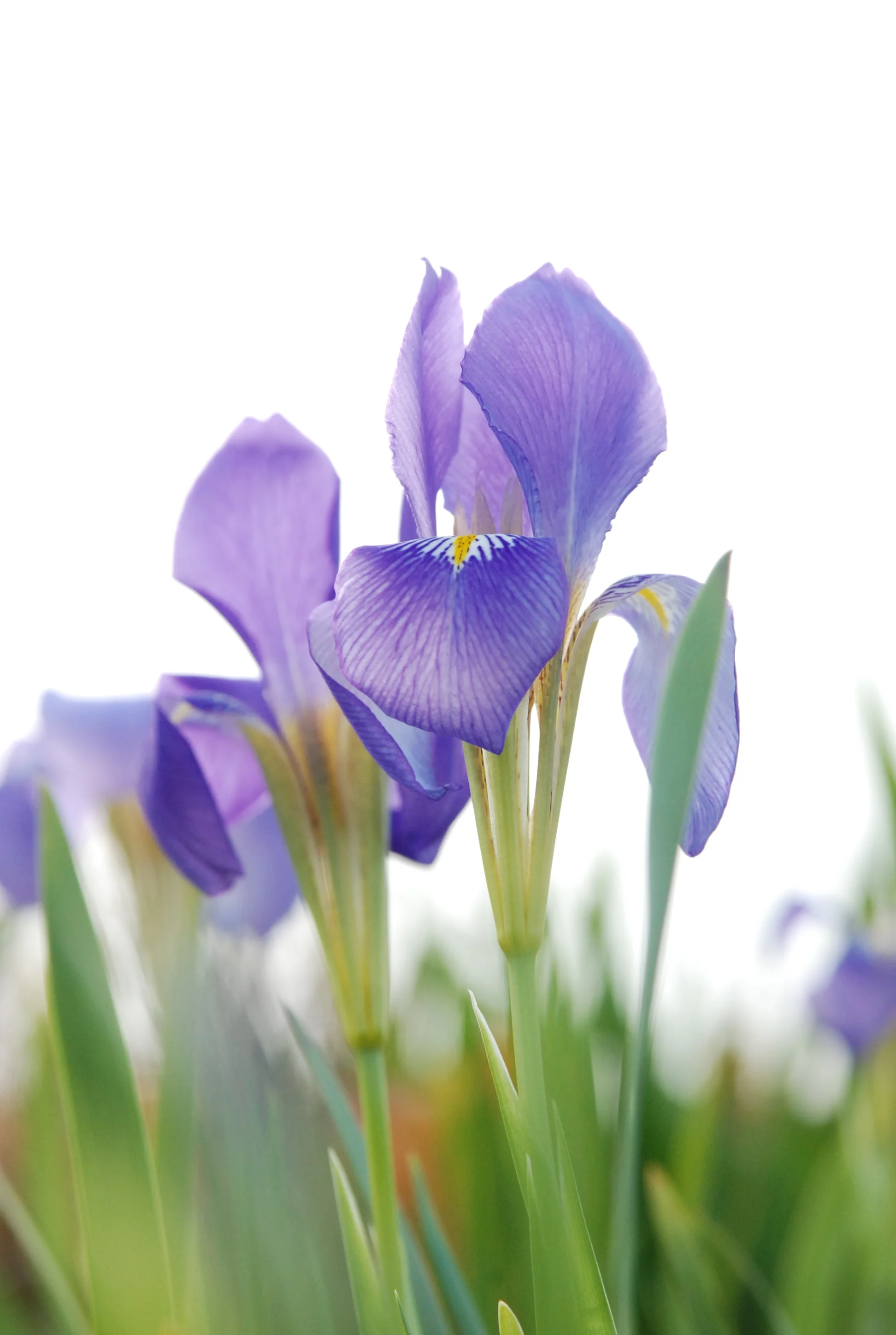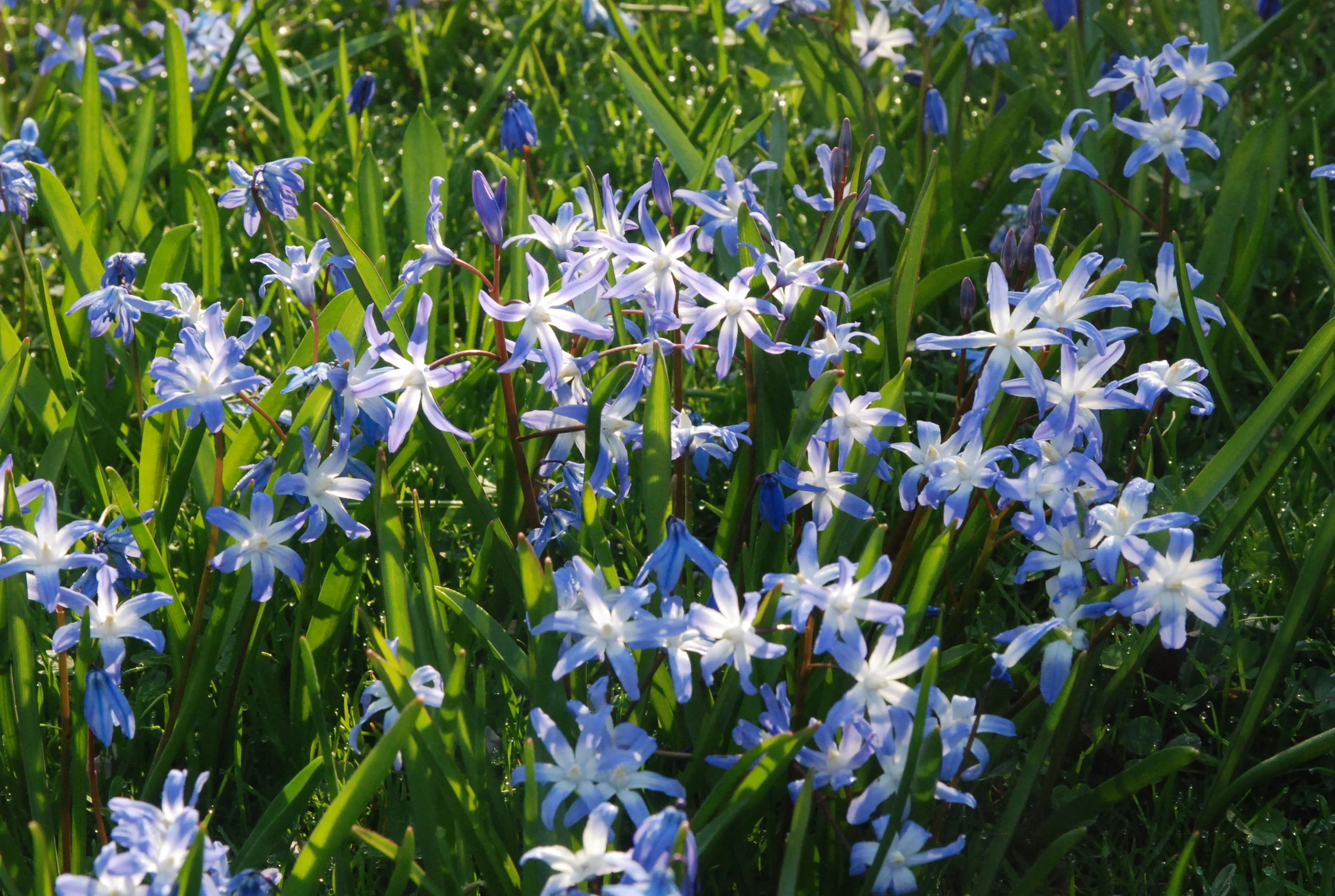Spring in the Community Garden Plot
Erysimum 'Fire King' with Tulipa 'Blushing Lady' (left) and Tulipa 'Ballerina' (lower left and center) in the community garden plot.
Being an urban resident, I'm not afforded the luxury of space that rural and suburban gardeners have for growing plants (although there is an advantage of having no deer or groundhogs to menace my gardening efforts). Last autumn, I devoted 2/3 of my modest plot in the community garden for tulips and wallflowers for cutting. Two tulips 'Blushing Lady' and 'Ballerina' were chosen for their colors as well as their size, with 'Ballerina' having the added bonus of scent. The wallflowers (Erysimum 'Fire King') were sown last summer and carefully tended in cold frames before being planted in early spring. I watched anxiously for the bulbs to sprout through the soil, and the long cool spring we have been having encouraged healthy, hardened growth and plump buds.
Tulipa 'Blushing Lady'
Tulipa 'Blushing Lady' is a sport of 'Temple of Beauty' that are part of the 'Lefeber' tulips characterized by their large size (30" tall), sturdy strong stems, and tapered teardrop buds. These tulips are descended from crosses with lily-flowered 'Mariette', and show hybrid vigor. I am not one who is entranced with pink flowers, but the subtle shading of pink towards orange and yellow colors on 'Blushing Lady' makes it a standout.
The metamorphsis of the colors on the buds of 'Blushing Lady' is memerizing to watch over a few days.
Tulipa 'Ballerina', somewhat dwarfed by its companions including Erysimum 'Fire King', packs impact in its color and scent.
As beautiful and large as 'Blushing Lady' is, I have not noted any perceptible scent from its flowers. Instead, I've returned again and again to Tulipa 'Ballerina', which offsets its shorter stems and smaller flowers with its olfactory pleasures of violets and orange blossoms. The foliage is a nice blue-green, and the flower color is a glowing tangerine orange suffused with shots of yellow, an unexpected surprise among the blues, whites, yellows, and pinks one commonly associates with spring. Such orange makes the garden aflame that sets the pulse racing ahead of summer warmth. When the flowers splay open in the sun, they resemble orange star fish on the seashore waiting for the tide to rush in. 'Ballerina' perennializes well too - although second year bulbs are said to have more yellow and green infusions on the flowers.
Erysimum 'Fire King' - showcasing the hot colors untypical for springtime colors.
Over the years, I've trialed several wallflowers, which are mainstay cool season annuals paired with tulips in British gardens. Unless we have a mild winter in Philadelphia, they're not reliably hardy preferring more equitable temperatures of 40s than the cold snaps of 20s and 30s (I was surprised to see potted plants overwinter for the last two years in a sheltered spot on my porch). Instead, the plants have to be cossetted in cold frames until the ground thaws enough and temperatures are mild enough (light frost only) for them to be bedded out. 'Fire King' is an old variety grown from seed and still surpasses the growth-retardant sprayed cultivars sold in the trade. Growing wallflowers from seeds allows you to pinch the growth and encourage willowy stems that weave among the flowering bulbs. Having seen firsthand several years the use of 'finished' wallflowers from wholesale nurseries at work has reinforced my distaste of them, and the newer cultivars don't possess the fragrance of the old ones. My mother contends that the floppy petals of wallflowers give them a sad, morbid look, but I can't complain when they are scented and bold in a way that awakens me from my wintertime blues for spring.











